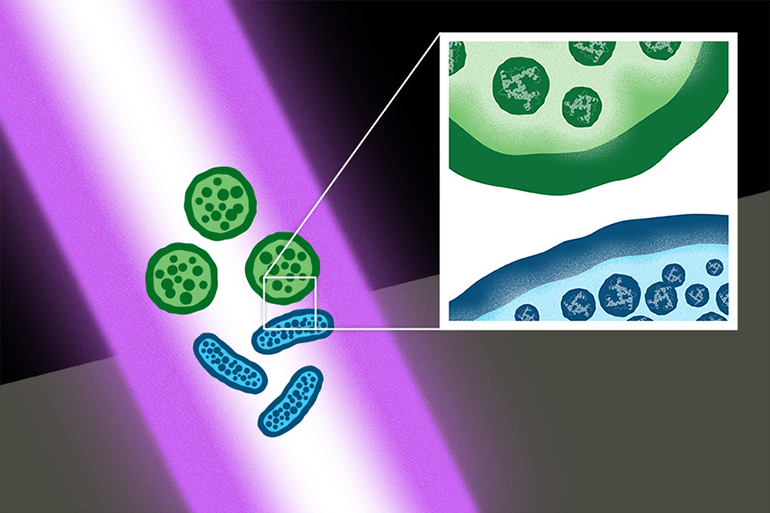Scientists at the Washington University School of Medicine in St. Louis have developed an ultrashort pulse laser that can kill multi-resistant bacteria and their spores without damaging human cells. The laser works by vibrating and breaking up protein structures within the bacterial cell, causing biochemical disruption and ultimately death. The researchers hope the technique could prove useful in decontaminating wounds and blood products.
Killing multidrug-resistant bacteria is not an easy task as many of the popular antibiotics we use are no longer effective against them. General antibacterial strategies that could kill such bacteria, such as heat or applying bleach, are useful for decontaminating surfaces and equipment, but are clearly not safe in the human body.
These researchers developed laser technology that can kill microbes such as bacteria and viruses with ease, but does not harm human cells. “The ultrashort pulse laser technology inactivates pathogens in a unique way and protects human proteins and cells at the same time,” said Shaw-Wei Tsen, one of the heads of research, in a press release. “Imagine if we could scan a laser beam over the area before closing a surgical wound and further reduce the risk of infection. I can imagine that this technology will soon be used to disinfect biological products in vitro and, in the future, even treat bloodstream infections by requiring patients to dialysis and passing the blood through a laser treatment device. ”
The technology works by destroying protein structures in the bacterial cells. Once the proteins break down, they often cling to other cellular components, creating a mess and eventually leading to cell death. However, the laser power required to kill bacterial cells and viruses does not affect human cells.
“We previously published a paper showing that laser power is important,” said Tsen. “We inactivate viruses above a certain laser power. As you increase the power, you begin to inactivate bacteria. But it still takes more energy, and we’re talking about orders of magnitude, to kill human cells. So there is a therapeutic window in which we can adjust the laser parameters so that we can kill pathogens without affecting human cells. “
So far, the researchers have tested the laser on multi-resistant bacteria in the laboratory, including MRSA and extended-spectrum beta-lactamase-producing E. coli, and showed that 99.9% of the bacteria samples were killed.
“Anything from human or animal sources could be contaminated with pathogens,” said Tsen. “We check all blood products before we transfuse them to the patient. The problem is, we need to know what we are looking for. If a new blood-borne virus shows up, like HIV did in the 1970s and 1980s, it could get into the blood supply before we know it. Ultrashort pulse lasers could be a way of ensuring that our blood supply is free of known and unknown pathogens. “
Study in the Journal of Biophotonics: Inactivation of multi-resistant bacteria and bacterial spores and generation of highly effective bacterial vaccines with ultrashort pulsed lasers
Via: Washington University School of Medicine, St. Louis
